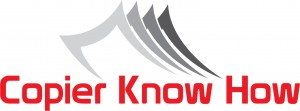New Print Technology Reaps Benefits for Public Sector
Public organisations such as the NHS and universities could reduce costs and find new and streamlined ways of working if they invest in the latest print technologies. By helping save on consumables and cutting back on costs such as electricity, many companies are beginning to discover the benefits of undertaking a full print audit whilst moving towards more eco-friendly solutions.
But changing to a more hi-tech solution for the public sector can have more far reaching effects, particularly with the greater connectivity that is now available for many MFPs. It actually provides organisations such as the NHS and universities with valuable tools that can help change the way they operate.
After three months of consultations on how they are going to invest in the coming years, the NHS has recently published its list of treatments and services that will be commissioned on a routine basis. One area where they may wish to look at investing is the way many Trusts and GP surgeries manage their print processes. Putting money into new equipment could well help reduce costs and give staff more flexibility, reducing outgoings and freeing up valuable finances that can be better used elsewhere.
The truth is that many NHS organisations are still using outdated technology in the firm belief that there is no viable, money saving alternative.
Print management software such as Papercut MF is easy to use and provides staff across the board with a whole set of useful tools; including the option of not printing but sending documents to portable devices such as tablets and mobile phones. Other major savings include managing resources better, moving away from old printing technology to a new one that is designed to be less of a strain on consumables such as toner and paper.
It’s not just in organisations such as the NHS where there can be large benefits in switching to newer technology; a number of universities have reviewed their printing provision and made sensible changes in the last few years. This has not only involved finding new ways to access educational documents, as in the sending of data to portable devices, but also monitoring how students actually use MFPs and other technology in today’s modern learning environment.
Some universities are also using the latest communications technology to monitor how staff and students interact and using that information to find new and innovative ways of providing printing and library services.
Public sector organisations can all benefit from a full print audit that takes a long, hard look at how current provision is handled. The overall aim is find new and exciting ways to provide those printing and data copying needs, helping to improve productivity but also, and more importantly, giving options that reduce costs, not only in consumables but areas such as power usage.
There’s no doubt that changing the way the public sector uses print technology can provide significant benefits and free up valuable finances that can be used for more important things such as care provision and educational resources.
